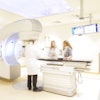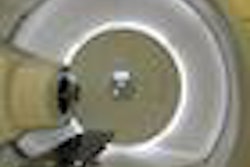
Proton therapy as a cancer treatment has been making gains, but it's years away from becoming mainstream. What's happened over the past five years? Medicalphysicsweb takes a look at the evolution of this intriguing form of cancer treatment.
The first cancer treatment center in the world to investigate clinical proton therapy for cancer patients opened in 1990 at Loma Linda University Medical Center in California. By 2006, there were approximately 25 facilities around the world treating patients with proton beams. And by the start of 2011, there were 38 operating particle therapy facilities: 32 offering proton therapy and the remainder treating with carbon ions. Importantly, 24 more sites are currently in a planning stage or under construction. The number of patients treated with protons has come close to doubling over this time, with more than 74,000 patients treated to date.
Alongside the growing number of facilities in operation, the past five years have seen the development of new accelerator systems, advances in beam delivery and dose monitoring techniques, and increased clinical applications. Medicalphysicsweb editor Tami Freeman spoke to Tony Lomax, PhD, head of medical physics at the Paul Scherrer Institute's Center for Proton Therapy in Switzerland, and Thomas Bortfeld, PhD, director of the physics division of the department of radiation oncology at Massachusetts General Hospital, to find out more.
Scanned beams
The most significant recent advance in proton therapy has been the implementation of scanning techniques in which a narrow proton beam is scanned throughout the target volume, according to Lomax. This ability to "paint" the dose has opened up the possibility of performing intensity-modulated proton therapy.
"The flexibility of the modulation of pencil beams allows us to really conform the dose very accurately to the tumor and spare critical structures, much as we do with [intensity-modulated radiation therapy (IMRT)] with photons, but also reducing the dose further against IMRT," Lomax told medicalphysicsweb. "I think this is where, for me at least, the biggest breakthrough has been made."
Lomax noted that the Paul Scherrer Institute is still one of the few sites that can perform proton scanning. "However, of the new facilities coming online, three to four to five of them in the future will certainly be doing scanning, only scanning," he said. "And large centers like the MD Anderson Cancer Center in Houston, and also [the Northeast Proton Therapy Center] in Boston, are just beginning to use scanning."
Bortfeld took a different slant on the same question. He highlighted how the equipment vendors' introduction of off-the-shelf beam delivery systems has helped bring proton therapy into the mainstream. He also pointed out the important role played by companies such as ProCure in providing end-to-end design, construction, staff training, and ongoing operation of proton facilities.
Ongoing challenges
Despite the gradually increasing uptake of proton therapy, there still remains a need for more facilities to come online and bring the benefits of protons to a far wider population. But does the high cost of setting up a proton therapy facility impede further implementation? Could the introduction of compact, lower-cost treatment systems from the likes of Still River Systems, CPAC Imaging, and ProTom International increase deployment?
Bortfeld agrees that cost is certainly a big factor hindering more widespread use of proton therapy. "Clearly, if proton therapy costs about the same as IMRT, say, then everybody would do proton therapy," he said. "The new developments of compact proton accelerators are very promising, but we haven't seen their clinical promise realized yet. So we are waiting for that."
He added that even though proton therapy has been the subject of much research for many years now, there's still a lot of technical work to be done. "I am a little concerned that if proton therapy gets into the hands of too many people too early then we might make some unnecessary mistakes," he said. "I think we need developments to make proton therapy more robust and more reliable before we can spread it more widely."
Lomax also cited cost as a challenge that needs to be addressed, but pointed out that lower-cost systems must be able to maintain the current treatment quality. He also emphasized the need for increased implementation of imaging techniques to monitor patients during treatment and ensure that the finely tuned Bragg peak -- the point at which protons deposit most of their energy -- is delivered in the right place.
Protons prevail
Both Lomax and Bortfeld concur that proton therapy is likely to become more prevalent in years to come. "There are an awful lot of centers in planning, facilities which are being built, facilities which will very shortly be online," said Lomax. "Some will use passive scattering, some scanning, and some will combine the two. I think it's going to become much more widespread, it's going to become much more mainstream."
Lomax suggested that in the longer term, imaging with protons rather than photons as part of the treatment planning process could prove beneficial. "I believe that if we're treating with protons we should be imaging with protons -- they have the same physical characteristics," he emphasized. Another possible future development could be online imaging during proton beam delivery, enabling real-time adjustment of treatment.
"If you had asked me 10 years ago, I would have said there's no way that proton therapy would ever be a strong competitor with IMRT," Bortfeld told medicalphysicsweb. "But now things have changed quite dramatically. Now I think that in about five years, most or all of the major centers will have proton therapy, or maybe carbon-ion therapy."
He continued: "I don't think I want to take a guess as to when proton therapy will take over and most patients will be treated with protons as opposed to photons. But I think that might also happen, some time in the future."
© IOP Publishing Limited. Republished with permission from medicalphysicsweb, a community website covering fundamental research and emerging technologies in medical imaging and radiation therapy.



















